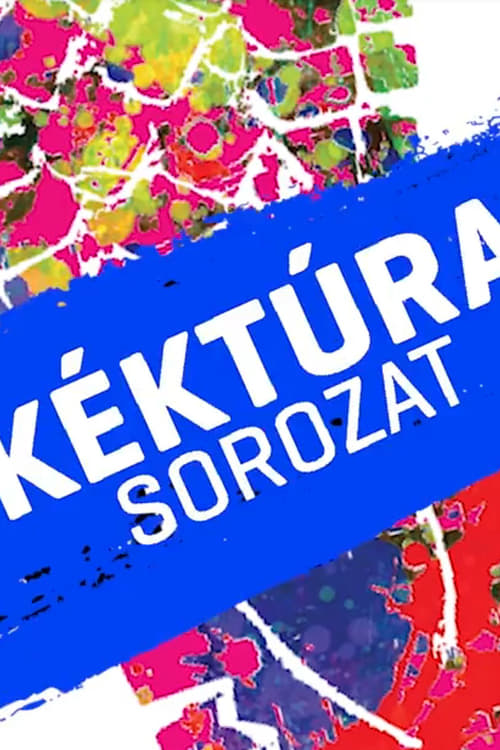
Ask Your Own Question
What is the plot?
In the opening scene of "Bűnösök kora," we are introduced to a young woman named Anna, who is found dead in a park. The camera pans over her lifeless body, revealing the shock and horror of the scene. The police arrive, led by Detective Kálmán, who begins to investigate the circumstances surrounding her death. As he examines the area, he notes the lack of witnesses and the eerie silence that envelops the park.
The narrative shifts to Anna's family, particularly her father, who is devastated by the loss. He is shown in a state of grief, struggling to comprehend the tragedy that has befallen them. The emotional weight of the situation is palpable as he recalls memories of Anna, highlighting their close bond and the impact of her death on his life.
Detective Kálmán interviews Anna's friends and acquaintances, piecing together her last known movements. He learns that Anna had been involved in a complicated relationship with a man named Gábor, who becomes a person of interest in the investigation. The tension builds as Kálmán confronts Gábor, who appears nervous and evasive during the questioning. Gábor's alibi is shaky, raising suspicions about his involvement in Anna's death.
As the investigation deepens, Kálmán uncovers a web of secrets surrounding Anna's life. He discovers that she had been involved in a local youth group, where tensions had been brewing among its members. This leads him to interview several other young people, revealing conflicting stories and hidden rivalries. The emotional stakes rise as Kálmán realizes that Anna's death may be linked to deeper issues within the group.
In a pivotal scene, Kálmán receives a tip-off about a confrontation that took place the night Anna died. He rushes to the location, where he finds evidence that suggests a struggle occurred. The discovery of a torn piece of clothing and a witness who heard shouting adds urgency to the investigation. Kálmán's determination to find the truth intensifies, and he begins to connect the dots between Anna's relationships and the potential motives for her murder.
The plot thickens when Kálmán learns about a secret party that Anna attended shortly before her death. He interviews attendees, revealing a chaotic atmosphere filled with jealousy and betrayal. One of the partygoers, a girl named Lili, breaks down and admits to having seen Anna arguing with another girl, hinting at a rivalry that may have escalated. This revelation shifts the focus of the investigation, as Kálmán now considers the possibility of multiple suspects.
As Kálmán delves deeper, he faces pushback from Anna's family, who are desperate for answers but also protective of her memory. The emotional conflict within the family is highlighted, showcasing their struggle between wanting justice and preserving Anna's legacy. Kálmán's interactions with them reveal his own internal conflict as he grapples with the weight of the case.
In a dramatic turn, Kálmán confronts Gábor again, this time armed with new evidence that contradicts his previous statements. The confrontation escalates, leading to a heated exchange where Gábor finally breaks down and admits to being present during Anna's final moments. He claims that he tried to help her but was overwhelmed by the situation. This confession adds layers to the narrative, as Kálmán must now determine the truth behind Gábor's involvement.
The climax of the season occurs when Kálmán organizes a confrontation between the key suspects, hoping to provoke a reaction that will reveal the truth. The tension in the room is palpable as accusations fly and emotions run high. In a shocking twist, Lili confesses to having been involved in a fight with Anna, revealing that jealousy over a boy led to a tragic accident. The revelation sends shockwaves through the group, and Kálmán realizes that the case is more complex than he initially thought.
In the final scenes, Kálmán reflects on the case and the impact it has had on everyone involved. The emotional fallout is evident as he meets with Anna's family to deliver the news. The weight of the investigation lingers, leaving a haunting sense of unresolved grief. The season concludes with Kálmán standing alone in the park where Anna was found, contemplating the fragility of life and the consequences of hidden truths.
Related Titles
Browse All Titles →
What is the ending?
In the ending of "Bűnösök kora," season 1, the investigation into the murder of a young woman reaches a climax. The main characters confront their own demons and the truth behind the crime. The resolution reveals the complexities of guilt, innocence, and the impact of the past on the present. The season concludes with a sense of unresolved tension, leaving the characters and viewers grappling with the consequences of their actions.
As the final episodes unfold, the tension escalates. The investigation has been fraught with twists and turns, leading to a series of confrontations among the main characters.
Scene 1: The police station is buzzing with activity as the detectives sift through the evidence. The lead investigator, grappling with his own moral dilemmas, feels the weight of the case pressing down on him. He is haunted by the victim's face, which serves as a constant reminder of the stakes involved. His determination to find the truth is palpable, but so is his frustration with the bureaucracy that often hinders justice.
Scene 2: In a dimly lit interrogation room, a key suspect is brought in. The atmosphere is thick with tension as the investigator presses for answers. The suspect, visibly shaken, begins to unravel under the pressure. His conflicting emotions--fear, guilt, and desperation--are evident as he struggles to maintain his composure. The investigator's relentless questioning reveals cracks in the suspect's story, hinting at deeper connections to the victim and the community.
Scene 3: Meanwhile, the victim's family is shown grappling with their grief. The mother, in particular, is portrayed as a figure of sorrow and anger, demanding justice for her daughter. Her emotional turmoil is a stark contrast to the procedural nature of the investigation, highlighting the personal stakes involved. The audience feels her pain as she navigates the aftermath of the tragedy, seeking closure in a world that feels increasingly chaotic.
Scene 4: As the investigation progresses, the lead investigator uncovers a web of lies and deceit that connects several characters. Each revelation brings new layers to the story, forcing the characters to confront their pasts. The emotional stakes rise as friendships are tested and loyalties are questioned. The investigator's internal struggle becomes more pronounced as he realizes that the truth may not be as clear-cut as he hoped.
Scene 5: In a climactic confrontation, the investigator faces off against the true perpetrator. The scene is charged with emotion as the characters lay bare their motivations and regrets. The perpetrator's confession is a moment of catharsis, but it also raises questions about justice and accountability. The investigator, while relieved to have solved the case, is left with a heavy heart, knowing that the resolution comes at a great cost.
Scene 6: The season concludes with a poignant scene that encapsulates the emotional fallout of the investigation. The lead investigator stands alone, reflecting on the choices made and the lives affected. The camera lingers on his face, capturing the weight of his responsibilities. The final shot leaves viewers with a sense of ambiguity, as the characters are left to navigate the aftermath of their actions, suggesting that the quest for justice is often fraught with moral complexities.
In the end, the fates of the main characters are intertwined with the unresolved tensions of the story. The lead investigator is left to grapple with the moral implications of his work, while the victim's family must find a way to heal amidst their loss. The season closes, leaving the audience pondering the intricate web of human emotions and the consequences of crime.
Is there a post-credit scene?
In "Bűnösök kora," Season 1, there is no post-credit scene. The episodes conclude without any additional scenes or teasers after the credits roll. The focus remains on the unfolding narrative and character development throughout the episodes, leaving viewers to reflect on the story and its themes without any further content after the main storyline concludes.
Who is the main antagonist in Season 1 of Bűnösök kora?
The main antagonist in Season 1 is a mysterious figure known as the 'Murderer,' who orchestrates a series of brutal killings that the protagonists must unravel. This character's motivations are shrouded in secrecy, creating a tense atmosphere as the investigation unfolds.
What role does the character of Anna play in the investigation?
Anna is a key character who serves as a detective in the investigation. Her determination to uncover the truth is fueled by personal stakes, as she has a deep connection to one of the victims. Throughout the season, her emotional struggles and professional challenges are highlighted, showcasing her resilience and commitment to justice.
How does the relationship between the detectives evolve throughout the season?
The relationship between the detectives, particularly Anna and her partner, is complex and evolves significantly. Initially, they face tension due to differing methods and personal issues, but as they confront the challenges of the case together, they develop a deeper understanding and trust in each other, which is crucial for solving the murders.
What is the significance of the recurring symbol found at the crime scenes?
The recurring symbol found at the crime scenes serves as a crucial clue that ties the murders together. It represents the killer's psychological state and motivations, leading the detectives on a path to uncovering the killer's identity. The symbol's meaning is explored throughout the season, adding layers to the narrative and heightening the suspense.
How does the character of László impact the investigation?
László is a pivotal character whose past is intertwined with the victims. His involvement in the investigation brings both insight and complications, as his personal history raises questions about his reliability. His emotional turmoil and the secrets he harbors create tension and drive the plot forward, making him a key figure in the unfolding mystery.
Is this family friendly?
"Bűnösök kora" (translated as "The Age of the Guilty") is a crime drama that delves into dark themes and complex moral dilemmas. While it offers a gripping narrative, it may not be suitable for children or sensitive viewers due to several potentially objectionable aspects:
-
Violence: The show contains scenes of crime and violence, including physical confrontations and the aftermath of violent acts, which may be distressing.
-
Murder and Crime: The central plot revolves around criminal activities, including murder investigations, which can be intense and unsettling.
-
Emotional Turmoil: Characters experience significant emotional distress, including grief, guilt, and moral conflict, which may be heavy for younger audiences.
-
Dark Themes: The exploration of guilt, justice, and the human psyche can be quite profound and may provoke uncomfortable feelings.
-
Language: There may be strong language or adult themes that could be inappropriate for younger viewers.
Overall, the series is more suited for mature audiences who can handle its intense and often dark subject matter.



















